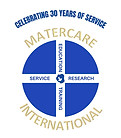The Year of Jubilee: A Sacred Vision for Restoring Justice in a Time of Exclusion
- MaterCare International

- Apr 24
- 3 min read
In 1996, the Canadian Conference of Catholic Bishops (CCCB) Social Affairs Commission sounded an urgent alarm: poverty was not merely a material issue, it was a moral and spiritual crisis. Women, Indigenous peoples, newcomers, and children were being pushed to the margins of Canadian society. By 1998, despite national economic growth, the Commission noted that “not all boats were lifted.” More than two decades later, the crisis has deepened. What once was marginalization is now, tragically, exclusion, an entrenched and expanding injustice threatening to become permanent for many Canadians.
This crisis calls not only for policy change but for a profound moral reawakening. And here, faith traditions particularly the Judeo-Christian vision offer essential wisdom. In the sacred tradition of the Year of Jubilee, we find a bold, restorative vision that speaks powerfully into our modern context.
The Year of Jubilee, described in Leviticus 25, was more than a quaint religious ritual. It was a radical reordering of society grounded in the belief that the land, the people, and even time itself ultimately belong to God.
Every 50 years, the Israelites were called to:
Rest the land: letting creation breathe, recognizing that endless exploitation is unsustainable.
Release slaves and debtors: offering liberation from bondage and economic despair.
Return ancestral land: preventing the permanent alienation of families from their means of livelihood.
Restore community integrity: repairing broken relationships and systems.
Jubilee wasn’t about temporary charity; it was about structural justice. It was a societal reset button a recognition that injustice, if left unchecked, becomes self-perpetuating and generational. Injecting the radical notion that debts can simply be forgiven.
The CCCB’s 2000 reflection on the Jubilee reminded us that biblical liberation is not a one-time act of generosity. The fact that the children of those enslaved were to be released as well reveals something deeper: that God’s vision for justice includes future generations. It demands social structures in which no one is permanently excluded or oppressed.
Today’s exclusion seen in systemic racism, economic inequality, gender-based discrimination, and intergenerational poverty violates that sacred vision.
The Jubilee invites us to ask:
What would it look like to structurally "release" the poor from cycles of debt and dependency?
How can land and resources be "returned" in a way that honors Indigenous rights and restores equity?
What must we do to "let the land rest," addressing the environmental degradation that so often disproportionately affects the vulnerable?
How do we "restore" dignity to children growing up in poverty, ensuring they inherit not despair but hope?
Faith communities, inspired by the Jubilee tradition, are uniquely positioned to challenge the status quo. They carry a prophetic responsibility, not merely to provide charity, but to pursue justice. This means advocating for fair wages, accessible housing, equitable education, and reparative policies for Indigenous communities and other marginalized groups.
The Jubilee reminds us that true freedom cannot exist without systemic fairness. It insists that relationships between humans, and between humanity and God must be built on justice and mercy.
In a world where exclusion seems to be deepening, the Year of Jubilee offers a radically hopeful alternative. It is a sacred insistence that no injustice is permanent, no system beyond redemption, no person beyond restoration. In its rhythms of release and return, the Jubilee teaches us that a just society is not only possible, it is a divine imperative.
As the CCCB observed, the vision of Jubilee is more urgent than ever. Let us not treat it as an ancient relic, but as a living call, a blueprint for the kind of communities, and the kind of world, we are called to build.
References:




Comments